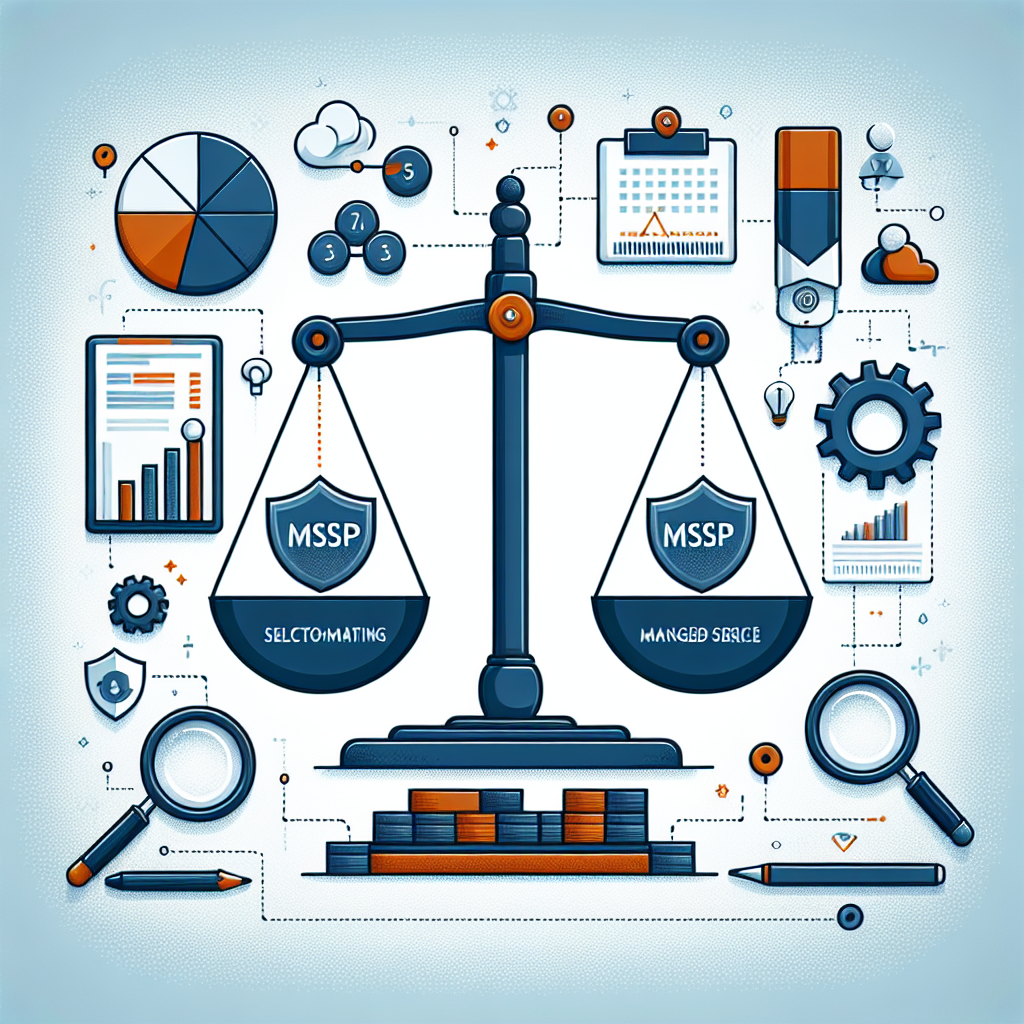Your cart is currently empty!
Tag: Guide

Navigating the Unexpected: A Guide to Disaster Recovery Strategies
In today’s unpredictable world, disaster can strike at any moment. From natural disasters such as hurricanes and earthquakes to man-made disasters like cyber attacks and data breaches, businesses must be prepared to navigate the unexpected and recover from these potentially devastating events. Developing a comprehensive disaster recovery strategy is essential for ensuring the survival and success of any organization in the face of adversity.The first step in creating a disaster recovery plan is to assess the potential risks and vulnerabilities that your business may face. This includes identifying the types of disasters that are most likely to impact your organization, as well as evaluating the potential consequences of these events. By understanding the specific threats that your business faces, you can develop a more targeted and effective recovery strategy.
Once you have identified the potential risks, the next step is to develop a plan for responding to and recovering from these events. This plan should outline the steps that will be taken to mitigate the impact of a disaster, as well as the strategies that will be used to restore normal operations as quickly as possible. Key components of a disaster recovery plan may include:
– Establishing clear roles and responsibilities for key personnel during a disaster
– Developing communication protocols for keeping employees, customers, and stakeholders informed
– Identifying backup systems and data recovery methods to ensure that critical information and resources can be restored
– Implementing strategies for securing and protecting assets during and after a disaster
– Testing the plan regularly to ensure that it is effective and up-to-date
In addition to developing a comprehensive disaster recovery plan, businesses should also consider investing in insurance coverage and other risk management strategies to protect themselves against potential losses. Insurance policies can provide financial support in the event of a disaster, helping businesses to recover more quickly and minimize the impact on their bottom line.
Ultimately, the key to successfully navigating the unexpected is to be proactive and prepared. By developing a comprehensive disaster recovery strategy and taking steps to mitigate potential risks, businesses can increase their resilience and improve their chances of recovering from a disaster with minimal disruption. By investing in disaster recovery planning and preparedness, businesses can ensure their long-term success and sustainability in an increasingly uncertain world.

Data Backup and Recovery: A Comprehensive Guide to Protecting Your Information
In today’s digital age, data backup and recovery are crucial aspects of protecting important information. Whether you’re a business owner or an individual, having a plan in place to safeguard your data is essential to prevent loss and ensure that you can quickly recover in the event of a disaster.Data backup involves making copies of your files and storing them in a secure location separate from your primary system. This ensures that if your computer or server crashes, or if you fall victim to a cyber-attack or natural disaster, you can easily retrieve your data and continue operating as usual. There are several methods of backing up data, including cloud storage, external hard drives, and network-attached storage devices.
When it comes to data recovery, having a reliable system in place is key to minimizing downtime and preventing significant loss. Data recovery involves retrieving your backed-up files and restoring them to their original state. This process can be done manually or automated, depending on the complexity of your backup system.
It’s important to regularly schedule backups and test your data recovery plan to ensure that it works effectively. This includes verifying that your backups are complete and up to date, and that you can successfully recover your files in the event of a crisis.
In addition to regularly backing up your data, it’s also essential to implement security measures to protect your information from cyber threats. This includes using strong passwords, encryption, and firewalls to prevent unauthorized access to your files.
Overall, data backup and recovery are critical components of safeguarding your information and ensuring business continuity. By developing a comprehensive plan and regularly testing it, you can protect your data and minimize the impact of potential disasters. Remember, it’s better to be safe than sorry when it comes to protecting your valuable information.

Implementing Cloud-Based IT Solutions: A Step-by-Step Guide
Cloud-based IT solutions have become increasingly popular in recent years due to their flexibility, scalability, and cost-effectiveness. Implementing these solutions can help organizations streamline their operations, improve collaboration, and enhance overall efficiency. However, the process of implementing cloud-based IT solutions can be complex and daunting for many organizations. In this article, we will provide a step-by-step guide to help you successfully implement cloud-based IT solutions in your organization.Step 1: Define your goals and requirements
Before you begin implementing cloud-based IT solutions, it is important to clearly define your goals and requirements. Identify the specific challenges and pain points that your organization is facing, and determine how cloud-based IT solutions can help address these issues. Consider factors such as scalability, security, compliance, and integration with existing systems.
Step 2: Choose the right cloud provider
Once you have a clear understanding of your goals and requirements, the next step is to choose the right cloud provider. There are several cloud providers in the market, each offering different features and pricing options. Consider factors such as the provider’s reputation, service level agreements, data security measures, and customer support when selecting a cloud provider.
Step 3: Plan your migration strategy
Before migrating your data and applications to the cloud, it is important to develop a comprehensive migration strategy. This strategy should outline the steps involved in the migration process, including data transfer, application reconfiguration, and testing. Consider conducting a pilot migration to identify any potential issues and ensure a smooth transition to the cloud.
Step 4: Train your team
Implementing cloud-based IT solutions will require your team to learn new technologies and processes. Provide comprehensive training to your team to ensure they have the necessary skills and knowledge to effectively use and manage cloud-based IT solutions. Consider offering training sessions, workshops, and online resources to support your team throughout the implementation process.
Step 5: Monitor and optimize
Once you have implemented cloud-based IT solutions, it is important to continuously monitor and optimize your cloud environment. Monitor performance metrics, security incidents, and costs to identify any areas for improvement. Consider implementing automation tools and best practices to optimize your cloud environment and ensure optimal performance.
In conclusion, implementing cloud-based IT solutions can help organizations improve efficiency, reduce costs, and enhance collaboration. By following these steps, you can successfully implement cloud-based IT solutions in your organization and reap the benefits of cloud technology. Remember to define your goals and requirements, choose the right cloud provider, plan your migration strategy, train your team, and continuously monitor and optimize your cloud environment.

From Preparation to Recovery: A Comprehensive Guide to Business Continuity
In today’s fast-paced and unpredictable business environment, it is essential for organizations to have a comprehensive plan in place for business continuity. From natural disasters to cyber attacks, there are many potential threats that can disrupt operations and put a company’s future at risk. That is why it is crucial for businesses to have a solid strategy in place to ensure they can quickly recover and resume normal operations in the event of a crisis.The first step in creating a business continuity plan is preparation. This involves identifying potential risks and threats that could impact the business, as well as assessing the potential impact of these risks on the organization. It is important to involve key stakeholders in this process, including senior management, IT staff, and other relevant departments.
Once the risks have been identified, the next step is to develop a plan for how the organization will respond to these threats. This plan should outline the steps that need to be taken to ensure the safety of employees, protect critical assets, and minimize the impact on operations. It is important to prioritize these steps based on the severity of the threat and the potential impact on the business.
In addition to having a plan in place for responding to emergencies, it is also important for organizations to have a plan for recovery. This involves outlining the steps that need to be taken to resume normal operations after a crisis has occurred. This may include restoring IT systems, repairing damaged facilities, and communicating with customers and stakeholders.
It is also important for organizations to regularly test and update their business continuity plans to ensure they are effective and up-to-date. This may involve conducting regular drills and exercises to simulate different scenarios and identify any gaps in the plan. It is also important to review the plan regularly to ensure it reflects any changes in the business environment or new threats that may have emerged.
Overall, creating a comprehensive business continuity plan is essential for organizations to ensure they can quickly recover and resume normal operations in the event of a crisis. By taking the time to prepare and plan for potential risks, organizations can minimize the impact of emergencies and protect their future success.

Choosing the Right MSP for Your Business: A Guide to Finding the Perfect Fit
In today’s increasingly digital world, businesses rely heavily on technology to operate efficiently and effectively. From managing customer data to facilitating communication between employees, technology plays a crucial role in driving business success. However, with the ever-evolving landscape of technology, many businesses struggle to keep up with the latest advancements and trends. This is where Managed Service Providers (MSPs) come in.MSPs offer a range of services to help businesses manage their IT infrastructure, from network monitoring and security to cloud computing and data backup. By outsourcing these tasks to an MSP, businesses can focus on their core operations and leave the technical aspects to the experts. But with so many MSPs to choose from, how do you know which one is the right fit for your business? Here are some tips to help you find the perfect MSP for your needs.
1. Define your needs and goals
Before you start your search for an MSP, it’s important to clearly define your business needs and goals. What are your current pain points when it comes to IT? Do you need help with network security, data backup, or cloud computing? By understanding your specific requirements, you can narrow down your search to MSPs that specialize in the services you need.
2. Research potential MSPs
Once you have a clear understanding of your needs, start researching potential MSPs in your area. Look for MSPs with experience in your industry and a track record of success. Check online reviews and ask for references from other businesses that have worked with the MSP. You can also reach out to industry associations or local business organizations for recommendations.
3. Consider the MSP’s capabilities and expertise
When evaluating MSPs, consider their capabilities and expertise in the services you require. Do they have experience working with businesses of your size and industry? Are they up-to-date on the latest technology trends and advancements? A reputable MSP should have a team of skilled professionals who can provide expert advice and support for your IT needs.
4. Evaluate the MSP’s security measures
Security is a top priority for businesses when it comes to IT infrastructure. Make sure the MSP you choose has robust security measures in place to protect your data and systems from cyber threats. Ask about their security protocols, encryption methods, and disaster recovery plans to ensure your business is in safe hands.
5. Assess the MSP’s customer service and support
Finally, consider the MSP’s customer service and support offerings. Will they be available 24/7 to address any issues or concerns that may arise? Do they offer proactive monitoring and maintenance to prevent downtime and disruptions? A reliable MSP should be responsive and proactive in their approach to customer support.
Choosing the right MSP for your business is a crucial decision that can have a significant impact on your operations and success. By following these tips and conducting thorough research, you can find the perfect MSP that meets your needs and helps your business thrive in the digital age.

From Planning to Execution: A Comprehensive Guide to Disaster Recovery
Disasters can strike at any moment, whether it be a natural calamity like a hurricane or a man-made crisis like a cyberattack. In times of crisis, having a solid disaster recovery plan in place can mean the difference between swiftly recovering and suffering irreparable damage. From planning to execution, a comprehensive disaster recovery strategy is essential for businesses and organizations of all sizes.The first step in disaster recovery planning is to assess the potential risks and vulnerabilities that your organization faces. This includes identifying the types of disasters that are most likely to occur in your area, as well as any potential weaknesses in your current infrastructure or systems. Conducting a thorough risk assessment will help you prioritize your recovery efforts and allocate resources effectively.
Once you have identified the risks, the next step is to create a detailed disaster recovery plan. This plan should outline the steps that need to be taken before, during, and after a disaster to ensure a swift and effective recovery. It should include a communication plan to ensure that all stakeholders are informed of the situation, as well as a timeline for recovery activities.
In addition to creating a plan, it is important to regularly test and update your disaster recovery strategy. Conducting regular drills and simulations will help ensure that all employees are familiar with their roles and responsibilities in the event of a disaster. It is also important to regularly review and update your plan to account for any changes in your organization or the external environment.
When disaster strikes, it is essential to act quickly and decisively to minimize the impact on your organization. This may involve activating your emergency response team, implementing your communication plan, and mobilizing resources to support recovery efforts. It is important to remain flexible and adapt your plan as needed to address unforeseen challenges or obstacles.
After the immediate crisis has passed, it is important to conduct a thorough post-disaster assessment to identify any areas for improvement in your disaster recovery plan. This may include analyzing the response to the disaster, identifying any weaknesses or gaps in your plan, and implementing changes to prevent similar incidents in the future.
In conclusion, a comprehensive disaster recovery plan is essential for ensuring the resilience and continuity of your organization in the face of a crisis. From planning to execution, it is important to take a proactive and strategic approach to disaster recovery to ensure a swift and effective response. By identifying risks, creating a detailed plan, testing and updating regularly, and responding quickly and decisively, you can minimize the impact of disasters on your organization and ensure a successful recovery.

The Ultimate Guide to Data Backup and Recovery for Businesses
In today’s digital age, data backup and recovery are essential for businesses of all sizes. Whether you’re a small startup or a large corporation, protecting your data is crucial to maintaining the integrity of your operations and ensuring the continuity of your business. In this ultimate guide, we will explore the importance of data backup and recovery, as well as provide tips and strategies for implementing a solid backup plan.Why Data Backup and Recovery are Important for Businesses
Data is the lifeblood of any business, and losing it can have catastrophic consequences. From financial records and customer information to employee data and intellectual property, the loss of critical data can result in significant financial losses, damage to your reputation, and even legal consequences. That’s why it’s crucial for businesses to have a robust data backup and recovery plan in place.
Data backup involves making copies of your data and storing them in a secure location. This ensures that if your primary data is lost, damaged, or corrupted, you can easily restore it from the backup copies. Data recovery, on the other hand, involves retrieving and restoring your data after it has been lost or compromised. With a solid backup and recovery plan, you can minimize downtime, protect your business from data loss, and ensure the continuity of your operations.
Tips for Implementing a Data Backup and Recovery Plan
1. Identify Your Critical Data: Start by identifying the data that is essential for the operation of your business. This may include financial records, customer information, employee data, and intellectual property. Make a list of all the critical data that you need to backup and prioritize them based on their importance.
2. Choose the Right Backup Solution: There are several options for backing up your data, including on-site and off-site backups, cloud storage, and hybrid solutions. Consider your budget, storage needs, and security requirements when choosing a backup solution. It’s also important to regularly test your backups to ensure that they are working properly.
3. Set Up Regular Backup Schedules: Establish a regular backup schedule to ensure that your data is consistently backed up. Depending on the volume of data and the frequency of changes, you may need to backup your data daily, weekly, or monthly. Automating the backup process can help ensure that your data is consistently backed up without requiring manual intervention.
4. Implement Data Encryption: To protect your data from unauthorized access, it’s important to encrypt your backups. Encryption converts your data into a secure format that can only be accessed with a decryption key. This adds an extra layer of security to your backup and ensures that your data remains confidential.
5. Develop a Data Recovery Plan: In addition to backing up your data, it’s important to have a data recovery plan in place. This plan should outline the steps you need to take to retrieve and restore your data in the event of a data loss. Test your data recovery plan regularly to ensure that it is effective and can be implemented quickly in an emergency.
By following these tips and strategies, you can create a solid data backup and recovery plan that will protect your business from data loss and ensure the continuity of your operations. Remember, data backup and recovery are essential for businesses of all sizes, so don’t wait until it’s too late to implement a backup plan. Start protecting your data today and safeguard the future of your business.

Navigating the Cloud: A Guide to Understanding and Implementing Cloud Computing
Cloud computing has become an essential part of modern business operations, offering a range of benefits such as cost savings, scalability, and flexibility. However, navigating the cloud can be a daunting task for those unfamiliar with the intricacies of this technology. In this guide, we will break down the basics of cloud computing and provide tips for successfully implementing it within your organization.What is Cloud Computing?
Cloud computing is the delivery of computing services – including servers, storage, databases, networking, software, analytics, and intelligence – over the internet to offer faster innovation, flexible resources, and economies of scale. Rather than having to invest in and maintain physical hardware on-premises, organizations can access these services on a pay-as-you-go basis, allowing for greater agility and cost savings.
Types of Cloud Computing Services:
1. Infrastructure as a Service (IaaS): This type of cloud service provides virtualized computing resources over the internet, allowing organizations to rent servers, storage, and networking infrastructure on a pay-per-use basis.
2. Platform as a Service (PaaS): PaaS offers a platform that allows developers to build, run, and manage applications without having to worry about the underlying infrastructure. This can streamline the development process and reduce time to market.
3. Software as a Service (SaaS): SaaS delivers software applications over the internet on a subscription basis, eliminating the need for organizations to install and maintain software on their own servers.
Key Considerations for Implementing Cloud Computing:
1. Determine Your Needs: Before migrating to the cloud, it’s essential to assess your organization’s requirements and goals. Consider factors such as scalability, security, compliance, and budget to determine the best cloud solution for your business.
2. Choose the Right Cloud Service Provider: There are numerous cloud service providers in the market, each offering different features and pricing models. Research and compare providers to find one that aligns with your organization’s needs and budget.
3. Ensure Data Security: Data security is a top priority when moving to the cloud. Implement robust security measures such as encryption, access controls, and regular audits to protect sensitive information.
4. Train Your Team: Cloud computing requires a different set of skills and knowledge compared to traditional IT infrastructure. Provide training and support to your team to ensure they can effectively manage and utilize cloud resources.
5. Monitor and Optimize: Regularly monitor your cloud environment to identify potential issues and optimize performance. Utilize monitoring tools and analytics to track resource usage, costs, and performance metrics.
In conclusion, cloud computing offers a range of benefits for organizations looking to modernize their IT infrastructure. By understanding the basics of cloud computing and following best practices for implementation, businesses can harness the power of the cloud to drive innovation and growth.

Protecting Your Personal Data: A Guide to Cybersecurity
In today’s digital age, protecting your personal data has never been more important. With cyber threats constantly evolving and becoming more sophisticated, it’s crucial to take proactive steps to safeguard your information from hackers and cybercriminals. Here are some tips to help you protect your personal data and enhance your cybersecurity:1. Use strong, unique passwords: One of the easiest ways for hackers to gain access to your personal data is through weak passwords. Make sure to use strong, complex passwords that include a mix of letters, numbers, and symbols. Additionally, avoid using the same password for multiple accounts, as this can make it easier for hackers to access all of your accounts if one is compromised.
2. Enable two-factor authentication: Two-factor authentication adds an extra layer of security to your accounts by requiring you to provide a second form of verification, such as a text message or email, in addition to your password. This makes it much harder for hackers to gain access to your accounts, even if they have your password.
3. Keep your software up to date: Software updates often include important security patches that fix vulnerabilities that hackers can exploit to access your personal data. Make sure to regularly update your operating system, web browser, and any other software you use to ensure that you have the latest security protections in place.
4. Be cautious of phishing scams: Phishing scams are a common tactic used by hackers to trick individuals into disclosing their personal information, such as login credentials or financial details. Be wary of unsolicited emails, text messages, or phone calls that ask for personal information or contain suspicious links or attachments. If in doubt, contact the company directly to verify the legitimacy of the communication.
5. Use a VPN: A virtual private network (VPN) encrypts your internet connection and masks your IP address, making it much harder for hackers to intercept your online activity and steal your personal data. VPNs are especially important when using public Wi-Fi networks, as these networks are often unsecured and can easily be compromised by cybercriminals.
6. Secure your devices: Make sure to secure your devices with a passcode or biometric authentication, such as fingerprint or facial recognition. Additionally, consider enabling device encryption to protect the data stored on your device in case it is lost or stolen.
By following these tips and implementing best practices for cybersecurity, you can protect your personal data and reduce the risk of falling victim to cyber threats. Remember, cybersecurity is an ongoing process, so make sure to stay informed about the latest threats and security measures to keep your data safe and secure.
Altcoins to guide investors through market waves
Disclosure: This article does not represent investment advice. The content and materials featured on this page are for educational purposes only.
XYZVerse and other altcoins emerge with the potential to offer investors a steady course through market waves.
Market downturns can wipe out gains and shake investor confidence. Yet, some cryptocurrencies defy the odds and thrive even in bearish times. Discover which altcoins could keep portfolios in the green.
XYZVerse
Step into the big leagues with XYZ, a VIP ticket to a game-changing blend of sports fandom and meme coin magic. XYZVerse isn’t just a project – it’s the MVP of a meme-fueled ecosystem, giving degens and investors a chance to capitalize on the rising demand for meme coins in a whole new way.

Polymarket raked in $1 billion in trading volume during the US election. Now, supercharge that with the viral energy of meme coins and the thrill of sports betting. With millions of fans ready to play, XYZVerse is primed for exponential growth.
Crowned with the title of best new meme project, XYZVerse has proven its dominance in the meme coin arena. This recognition is just the beginning of its journey to becoming the undisputed champion of the GameFi sector.
With upcoming listings on top-tier CEX and DEX platforms, audited smart contracts, and a trusted team leading the charge, XYZ is built to win. Its first-mover advantage ensures its users are ahead of the crowd.
Solana
Unlike its competitors, Solana avoids complex solutions like sharding or second-layer protocols. Instead, it offers a high-capacity network that can handle a large number of transactions quickly. This makes it attractive for developers building dApps that need high performance. The SOL coin sits at the heart of this ecosystem, enabling transactions, running custom programs, and rewarding network supporters.
In the current market, Solana stands out due to its robust technology and the growing interest in scalable blockchain solutions. While Ethereum faces challenges with congestion and high fees, Solana’s network offers faster transactions and flexibility across multiple programming languages.
Avalanche
Avalanche is a Layer-1 platform capable of handling 4,500 transactions per second, finalizing operations in under two seconds. Avalanche uses a unique hybrid consensus mechanism that blends classical and Nakamoto principles, enhancing both speed and security.
Another standout feature for Avalanche is the ability for users to create customizable subnets, offering flexibility and scalability. AVAX plays a central role, settling transaction fees, network security through staking, and powering these subnets.
In today’s market, Avalanche’s blend of speed, affordability, and environmental consciousness sets it apart. The utility of AVAX also gives it a unique edge. As the demand for efficient and sustainable blockchain solutions grows, AVAX could become increasingly attractive.
Chainlink
Usually, smart contracts can only use data from the blockchain. Chainlink changes this by connecting them to external sources like APIs and systems. The platform works through oracles, which fetch data, check accuracy, and deliver to smart contracts securely. This makes smart contracts more powerful, as they can interact with events and data outside the blockchain.
Chainlink’s LINK token is used to reward those who provide reliable data, helping to keep the network secure and decentralized. With the growing need for smart contracts that can work with real-world data, Chainlink’s role becomes even more important.
Polkadot
Polkadot is a decentralized protocol that enables secure communication between diverse blockchains. By using parachains, Polkadot boosts speed and scalability, handling transactions much faster than traditional blockchains.
In the current market cycle, Polkadot stands out with its promise of interconnected and efficient blockchains. While Bitcoin and Ethereum laid the groundwork, Polkadot addresses their limitations by enhancing interoperability and performance. As the demand for faster and more versatile blockchain solutions grows, Polkadot’s approach positions it as an attractive option in the crypto landscape.
Conclusion
While SOL, AVAX, LINK, and DOT are solid choices, XYZVerse offers a unique meme coin uniting sports fans, aiming for massive growth in the current bull run.
To learn more about XYZVerse, visit their website, Telegram, or X.
Disclosure: This content is provided by a third party. crypto.news does not endorse any product mentioned on this page. Users must do their own research before taking any actions related to the company.
Navigating the volatile cryptocurrency market can be a daunting task, especially with the rise of altcoins. Altcoins, or alternative coins, are any cryptocurrency other than Bitcoin. With thousands of altcoins available, it can be overwhelming to determine which ones are worth investing in.Here are a few tips to help guide investors through the market waves of altcoins:
1. Do your research: Before investing in any altcoin, it’s important to thoroughly research the project, team, technology, and community behind it. Look for whitepapers, roadmaps, and community forums to gain a better understanding of the altcoin.
2. Diversify your portfolio: Instead of putting all your eggs in one basket, consider diversifying your portfolio with a mix of different altcoins. This can help spread out your risk and potentially increase your chances of success.
3. Stay updated on market trends: The cryptocurrency market is constantly evolving, so it’s important to stay updated on market trends, news, and developments. Follow reputable sources and stay informed on any regulatory changes that may impact the altcoin market.
4. Set realistic goals: When investing in altcoins, it’s important to set realistic goals and expectations. Remember that the market can be highly volatile, and prices can fluctuate rapidly. Be prepared for potential losses and don’t invest more than you can afford to lose.
5. Consider long-term investment strategies: Instead of trying to time the market, consider adopting a long-term investment strategy for altcoins. This can help reduce the impact of short-term market fluctuations and potentially increase your returns over time.
By following these tips, investors can navigate the market waves of altcoins with more confidence and make informed decisions when investing in cryptocurrency. Remember to always do your own research and consult with a financial advisor before making any investment decisions.
Tags:
- Altcoins investment tips
- Crypto market analysis
- Top altcoins for investors
- Navigating market volatility with altcoins
- Altcoin investment strategies
- Altcoin market trends
- Diversifying with altcoins
- Altcoin trading guide
- Maximizing profits with altcoins
- Altcoin investment opportunities
#Altcoins #guide #investors #market #waves
